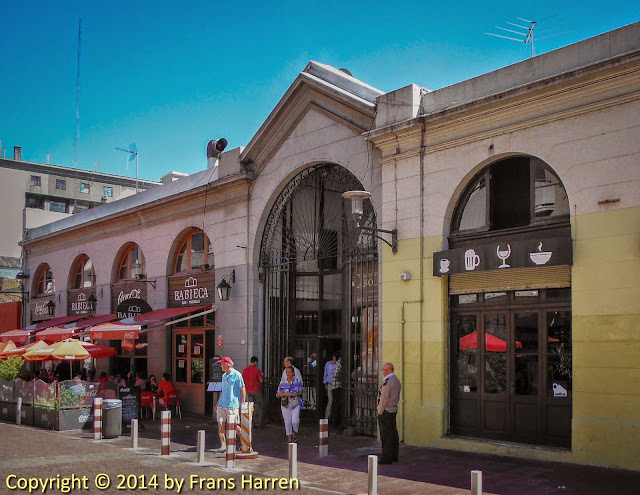
Mercado del Puerto
History
According to historians Fernando O. Assunção and Iris Bomset Franco, in 1865 a company was formed by actions initiated by the trader Pedro Sáenz de Zumarán order to build a market in Montevideo. With this target the land to the north shore of the bay, in an area known as "The Bathing House", limited by the present streets Pérez Castellanos, Piedras, Maciel and Rambla 25 de agosto de 1825.
One of the initial steps by employers was to consult the English engineer R. H. Mesures on the feasibility of designing a metal building on iron bases, technical absolutely unknown in America, but that is beginning to be applied in Europe. Using skeletons of iron in architecture definitely consecrate in 1889, when Gustavo Eiffel raised in Paris the tower that bears his name.
The engineer Mesures must monitor metal castings made in the workshops of the Union Foundry of K.T. Parkin, in Liverpool, and then travel to Montevideo with a squad of officers first blacksmiths to direct the work. The original frame was erected on the masonry work of the French constructor Eugenio Penot. Construction took three years.
It was inaugurated on 10 October 1868 with the assistance of the President of the Republic, Lorenzo Batlle and members of his cabinet. Their destination was the supplier of fruit, vegetables and meat to ships that arrived at Montevideo's bay and then wealthy families built their mansions in the surrounding market. Greengrocers and butchers became, after the years and today the famous places mented foods and drinks.
The variegated metal frame from the port market has seen the most diverse gatherings. Carlos Gardel and Enrico Caruso strolled together by internal streets; José Enrique Rodó used to be drink there its "caflitas", a sneaky cup of coffee; Pedro Figari took out several of the scenes that inspired his paintings.
Parallel to the true story of Port Market circulated other untrue. It was said that by 1800 passed in transit through the port of Montevideo iron structure of what was to be a railway station in Bolivia. By not paying the destination country needed to complete the transaction pantries, the British company that owned, top it would have decided in Montevideo. There is also another version which held that the Iron Market was in its primitive and original destination, a railway station which was up over a city of Pacific Ocean. The ship that led the charge would have wrecked on the coast of Maldonado and Rocha, and in those circumstances a group of capitalists have decided montevideanos cheaply acquire the abandoned material and use it to build a market.
Currently does not work as market but inside and nearby have installed numerous restaurants serving, among other specialties, the dish Uruguayan, the roast beef, making it obligatory point of the visit to the City Vieja of Montevideo.
The market environment is heterogeneous. Under its metal frame odors and different colors are mixed, while artisans, musicians and artists interact with the people who come to eat, to buy or just browsing. On Saturday, coinciding with the Cultural promoted Paseo Ciudad Vieja, is animated by musicians, singers and artists journey. Spreads wide audience both within the market, as in Perez Castellanos pedestrian street in the plaza of La Proa, where usually a craft fair, souvenirs and antiques is located.
Across the Rambla is the Port of Montevideo.
See: wikipedia











0 comments:
Post a Comment